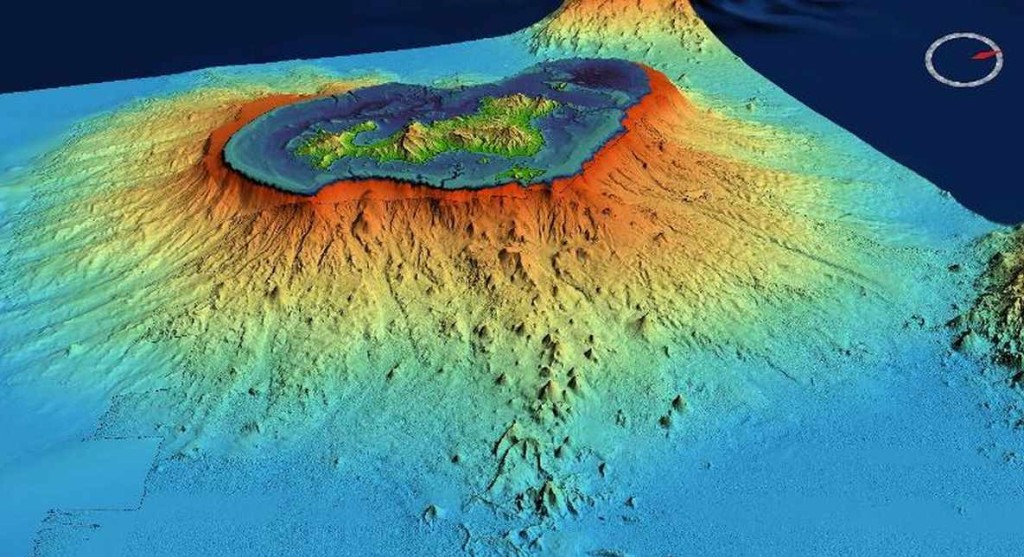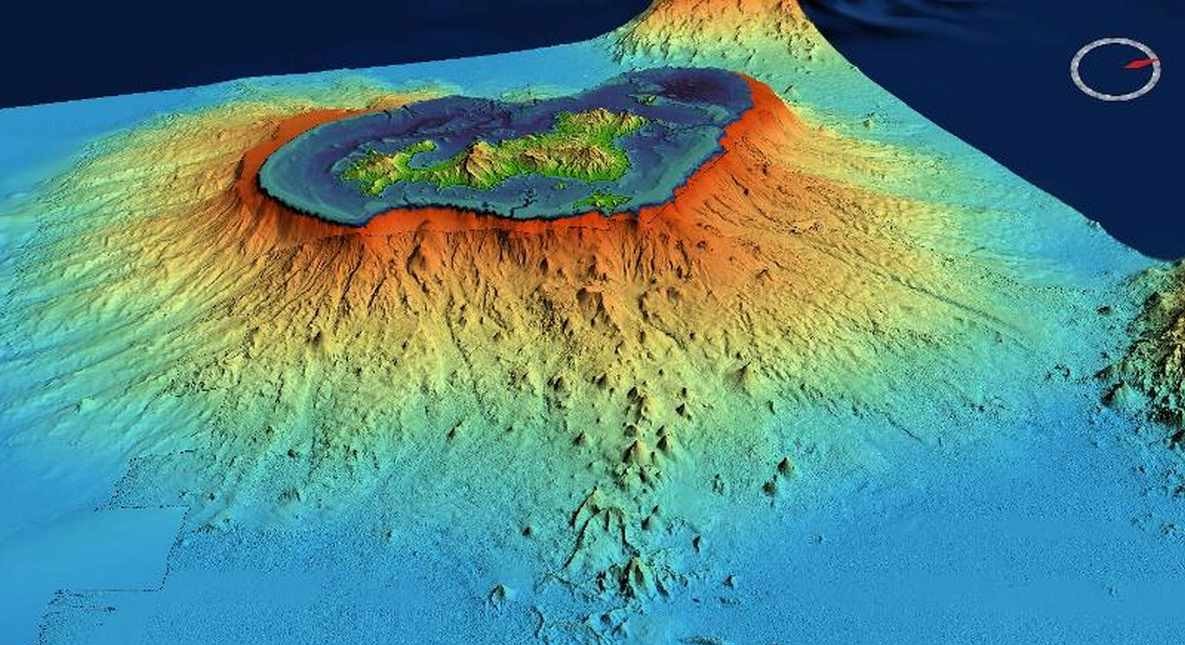
A new study concludes that an extinct volcano off the shore of Portugal could store as much as 1.2-8.6 gigatons of carbon dioxide, the equivalent of 24-125 years of the country’s industrial emissions.
Doing so would rely on a method known as “in situ mineral carbonization,” which works when the CO2 taken from the air is pumped deep underground.
Once in the bowels of this extinct volcano, calcium, magnesium, and iron react to the incoming carbon dioxide to form calcite, dolomite, and magnesite, trapping the CO2 forever in a rocky prison.
Doing it in the Fontanelas volcano, 60 miles off the coast of Portugal presents several advantages. First, the mountainous structure of the volcano would make drilling into it easy relative to other in situ mineral carbonization drilling projects. Second, volcanic basalt tends to contain high percentages of iron, magnesium, and calcium. Thirdly, it’s near at hand to the shore and doesn’t take up any land space in the country.
“We know that most countries, including Portugal, are making efforts to decarbonize the economy and our human activities, this is a message that this may be one of the instruments to solve the problem,” says Ricardo Pereira, a geologist at the NOVA School of Science and Technology, and co-author of the study.
Utilizing existing data on dredging and drilling done by seismologists and scientists working in oil exploration, the joint American-Portuguese team of scientists publishing for the Geological Society of America found that the rocks of the Fontanelas volcano contained high levels of carbonates—indicating that the processes of in situ carbonization were already occurring naturally.
MORE VOLCANO UTILIZATION: The Perfect Energy Source Is Already Here – Endless Geothermal Is Poised for Release From Deep in the Earth
Furthermore, the rocks dredged up were 40% porous, meaning a high amount of space exists for the injection of CO2.
The authors suggest that there are likely other undersea volcanoes that countries could use as CO2 landfills.
SHARE This Potentially Big Discovery In The Emissions Race With Your Friends…




















